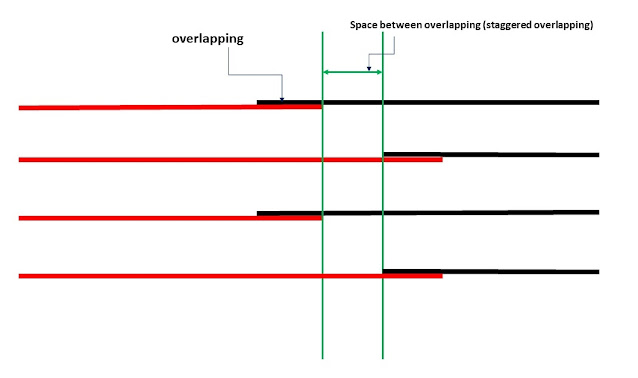Prime coat
A prime coat is the application of low viscosity bituminous materials to the absorptive surface to penetrate, bond, and stabilize the existing surface before laying the asphalt mix. Usually, the prime coat is applied above the aggregate base coarse or granular bases that will receive the asphalt layer. While the tack coat is applied between two layers of asphalt. Tack coat is a very light application of bituminous materials to ensure proper bonding between two binder layers.
Figure 1
the benefits of using prime coat are as follow: · Prime coat will penetrate and fill the voids of the granular base course. Also, it will coat and bond the mineral particles in the base course to produce a tough and tight surface to receive the binder layer.
· Prime coat will waterproof the granular base course, which provides protection from the wet weather. The prime coat will prevent the base course layer from absorbing the moisture from wet weather.
· Improving the bond between the granular base course and the following asphalt binder layer.
· Reducing the maintenance of the untreated compacted base course when the laying of asphalt delayed for a long time.
The applied prime coat should be left to cure, so it will function properly. There is no agreement on the duration of the curing time. The prime coat should be absorbed by the base course layer before laying the asphalt. The excessive prime coat should be removed. Blotter sand is usually used to remove the excessive prime coat. Before the placing of the asphalt layer. Loose blotter sand should be removed. The curing time will increase for cold weather, and It will decrease for hot weather. Emulsified products would cure faster than cutback products. The expected curing time for Emulsified products is 24 hours. While the cutback products will consume longer time to fully cure. The expected curing time is 24 to 72 hours. The excessive prime coat can negatively affect road construction. The Excessive prime coat can cause base movement more than the unprimed surface. Also, the placed asphalt layer may absorb the excessive prime coat, which can result in slippage and rutting of pavement.
The prime coat can be omitted in some cases. According to Hot-mix asphalt handbook 2000, the purpose of using a prime coat is to protect the underlying material from moisture in wet conditions. If the underlying material can be protected from rainfall, the prime coat will not be required. The prime coat may not be allowed in cold weather because the curing time would be long. According to the asphalt institute, a prime coat should be used when the HMA layer is less than 100 mm. Erdminger, in his guideline, suggested that the using of the prime coat is not necessary when the HMA is thicker than 100 mm.
For priming hard, dense, and difficult to penetrate bases low viscosity medium curing cutbacks (MC) are used. In general, MC-30 or MC-70 used. Higher viscosity MC grades or low viscosity rapid curing RC may used for the surface that sufficiently open. OCAPE recommended the using of MC over RC because of MC cutbacks distillate with Kerosene, which safer than RC distillates (gasoline or naphtha).
The Asphalt Institute recommends application rates of 0.9 to 2.3 L/m2 (0.2 to 0.5 gal/yd2) for MC cutbacks and 0.5 to 1.4 L/m2 per 25 mm of depth (0.1 to 0.3 gal/yd2 /in depth) for asphalt emulsions. Others recommend from 0.65 L/m2 to 2.0 L/m2 (0.15 to 0.45 gal/yd2) (5,19). Application rates should vary based on the openness of the base, and no more prime should be placed than can be absorbed by the granular base in 24 hours. Any excess should be removed with blotter sand.
The prime coat shall be distributed uniformly and adequately. To prevent streaking and ensure proper application and coverage of prime coat. The spray nozzles shall be set at 15-30 from the horizontal axis of the spray bar, as shown in figure no:2. Proper setting spray nozzles will prevent the prime coat from interfering with adjacent spray nozzles. The height of the spray bar should be adjusted to ensure at least a single, double, or triple overlap. The double overlap is recommended for the most prime coat. For uniform applying of prime coat, the spray bar height must be maintained. Figure no: 3 shows the effects of spray bar height on prime coat coverage.

Figure 2

Figure 3
Adequate viscosity should be maintained to ensure proper penetration and spray applications of liquid asphalt. The cutbacks are heated to achieve the required viscosity and occasionally emulsions or diluting emulsions with water. Table no.1 showing the recommended temperature for a typical prime coat.

















Comments
Post a Comment